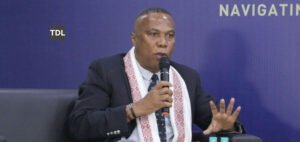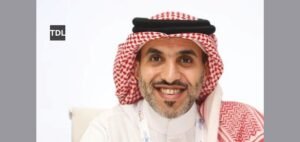During a period where organizational power is more vital than ever before, Amani Bahassan is blazing the trail for change-leadership HR. At ArcelorMittal Tubular Products Al-Jubail, she is Chief Human Capital Officer with a perfect mix of technical acumen and solid people orientation. Her professional life has transformed HR as a strategic driver of growth through her determination, vision, and innovative thinking.
Bahassan, armed with professional degrees from computer science and education on human resource management, created what she termed as a “strategic vision with operational excellence,” envisioning an entirely new direction in workforce development founded on data-driven, rather than empathetic, leadership. She is referring to the concept as “strategic vision with operational excellence,” something more than the traditional paradigms of HR. It is a model of leadership that fostering purpose, inclusiveness, and on-going learning at all levels and aligns human capital programs with strategic business goals.
She is a trailblazer of cutting-edge initiatives at ArcelorMittal TPJ, from doubling training expenditures, establishing a full-fledged Leadership Academy, and ensuring diversity and inclusion in the employee life cycle.
Most impactful, however, is her unwavering belief in resilience that has been conditioned since her formative working years working with male-dominated firms. Today, she is coaching and motivating others to success, teaching a leadership of impact, empathy, and candor that comes with authority. By so doing, Amani Bahassan is transforming the future of leadership itself and crafting high-performance teams.
Building High-Performance Teams Through Strategic Vision
Today, Bahassan’s approach to building and leading high-performing HR teams reflects her unique blend of technical expertise and people-focused leadership. Her philosophy centers on what she calls “strategic vision with operational excellence,” emphasizing the importance of aligning HR initiatives with broader business objectives while maintaining a human-centric approach.
“Building high-performing HR teams involves a blend of strategic vision, people management, and operational excellence.” she explains. Her methodology includes leading by example, defining clear visions aligned with business goals, and investing heavily in continuous learning. Under her leadership, ArcelorMittal TPJ has doubled its training and development budget, establishing a comprehensive Leadership Academy Program that supports growth from frontline workers to executive leadership.
Her team-building strategy emphasizes competency-based hiring that balances technical expertise with essential soft skills like empathy and communication. “Look for HR professionals with both technical expertise and soft skills,” she advises, noting the importance of building teams with diverse backgrounds and experiences to foster innovation.
Culture as the Company’s DNA
For Bahassan, company culture isn’t just about values posted on walls, it’s the invisible architecture that shapes behavior and drives performance. “A strong company culture is the identity of the company that is used to describe its characteristics and is linked to what you do, not what you say,” she emphasizes.
Her culture-building philosophy starts with what she calls a “purpose-driven foundation,” ensuring that every team member understands the “why” behind their work. This approach has been particularly effective in managing ArcelorMittal TPJ’s multicultural workforce, where 26 different nationalities collaborate toward collective goals.
The strategy involves creating meaningful rituals, from onboarding traditions to recognition ceremonies, while embedding cultural values into every business process. “Leaders model the culture. Every action by leadership either reinforces or erodes culture.” she notes
Technology-Driven HR Innovation
Bahassan’s computer science background has proven invaluable in her approach to modernizing HR management. At ArcelorMittal TPJ, she has spearheaded the implementation of advanced technologies that enhance efficiency and strategic decision-making.
The company has invested in Talentera to automate the recruitment process. “Chatbots are under development to enhance candidate communication, scheduling interviews and FAQs,” she explains, outlining a comprehensive digital transformation strategy.
Looking ahead to 2026, Bahassan plans to further integrate predictive workforce planning, AI-based recruitment platforms, and AI-powered video analysis tools to enhance hiring precision and efficiency. These innovations will reflect her continued push toward a smarter, more agile HR function aligned with the company’s evolving strategic needs.
Her team has also rolled out cloud-based HRIS through SAP SuccessFactors, streamlining performance management while empowering employees through self-service portals. Technology integration extends to HR analytics and predictive modeling, enabling sophisticated workforce planning that can forecast hiring needs, turnover risks, and skill gaps.
Looking ahead, she has outlined an ambitious 2025 roadmap that includes employee experience platforms with digital onboarding capabilities, well-being apps integrating mental health support, and virtual HR assistants providing 24/7 employee support through intelligent chatbots.
Diversity and ESG as Strategic Imperative
Perhaps nowhere is Bahassan’s transformational leadership more evident than in her approach to diversity, equity, and inclusion (DEI). Drawing from her own experiences as often the only woman in male-dominated environments, she has developed a comprehensive DEI strategy that goes far beyond compliance.
She emphasizes that it is not merely a trend to follow, but a cultural mindset supported by intentional strategic targets. Under her leadership, ArcelorMittal TPJ has made significant strides in increasing female representation not only in numbers but also across a wide range of roles and management levels within the organization.
Her DEI integration spans the entire employee lifecycle, from bias-free job descriptions and diverse hiring panels to inclusive onboarding programs and equitable access to growth opportunities. The company now maintains DEI dashboards that track representation, pay equity, promotion rates, and inclusion scores, with leadership accountability tied directly to DEI performance metrics.
In addition, she is actively driving ESG and DEI as core people agendas—aligning human capital practices with sustainability, governance, and inclusive growth. Her leadership has helped embed responsibility, sustainability, and inclusion into the organization’s culture and workforce practices, supporting initiatives in community engagement, local talent development, and gender diversity.
Measuring What Matters: Employee Engagement
Bahassan brings a data-driven approach to employee engagement, distinguishing between engagement and satisfaction while recognizing their interconnected nature. “There is a difference between employee engagement which is correlated to proactive and continuous work engagement versus employee satisfaction, which is linked to other elements such as benefits, pay, facilities.” she explains.
Her measurement strategy combines annual and pulse surveys with behavioral data analysis, tracking everything from turnover rates to participation in company initiatives. The company utilizes Employee Net Promoter Score (eNPS ) as a key metric, while conducting regular one-on-ones and stay interviews for qualitative insights.
The improvement strategies focus on strengthening leadership communication, implementing peer-to-peer recognition programs, and fostering inclusion and belonging through employee resource groups. Critically, Bahassan emphasizes the importance of acting on feedback, advocating for organizations to share survey results transparently, co-create action plans with employees, and ensure consistent follow-through.
Overcoming Career Challenges Through Resilience
Bahassan’s career journey hasn’t been without significant obstacles. In the early stages, she struggled to find mentorship and representation in predominantly male environments. “I desperately needed a mentor to help me navigate work-related concerns, but being the only female in an all-male organization was not placing me in a ‘special’ position, but rather a restrictive one.” she recalls.
Her response was characteristically determined: working twice as hard as male colleagues, advocating for herself, and investing heavily in continuous education. She earned both Masters and PhD degrees in HRM from a tier-one US university while navigating daily professional challenges.
“Rejection was almost a daily ritual, but it did not deter me from pushing through. The key was resilience and persistence and not allowing others to dictate my development.” she reflects. As her voice grew stronger and her business impact became undeniable, she began advocating for others without representation or voice.
Future-Forward Leadership Development
Bahassan’s approach to leadership development reflects her belief that “leadership is not a title, it’s a mindset and a set of behaviors.” Her tiered development programs address different organizational levels, from emerging leaders focusing on self-awareness and communication to senior leaders developing strategic thinking and enterprise-wide impact capabilities.
The programs utilize blended learning approaches combining formal training, experiential learning through real-world projects, and social learning through peer coaching communities. Data and feedback drive continuous improvement, with 360-degree assessments and leadership potential analytics helping identify and develop high-potential talent.
Preparing for Tomorrow’s Workforce
Looking ahead, Bahassan anticipates several transformative trends that will define the future of HR. These include AI and automation in recruitment and performance management, skills-based talent management models, and the continued evolution of flexible work arrangements.
Her organization is preparing for these changes through strategic investments in predictive analytics for workforce planning, internal mobility platforms, and comprehensive well-being initiatives that address mental health and work-life balance as strategic priorities.
Advice for Aspiring HR Professionals
For those entering the HR field, Bahassan’s counsel is both practical and inspirational. She emphasizes the importance of building a strong educational foundation, including relevant certifications, while developing key skills in communication, conflict resolution, and data literacy.
“The most impactful advice is to gain practical experience and stay informed and evolve with the changes and the latest HR trends and practices.” she concludes. Her own journey from computer science to HR leadership exemplifies the power of adaptability, continuous learning, and unwavering determination to create positive change.
In an era where human capital has never been more critical to organizational success, leaders like Amani Bahassan are redefining what it means to manage, develop, and inspire the workforce of tomorrow. Her story serves as both blueprint and inspiration for the next generation of HR professionals ready to break barriers and drive meaningful change.
Read Also: Middle East’s Top 10 Inspiring HR Leaders to Watch in 2025




